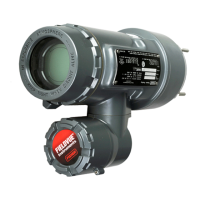
Do you have a question about the Emerson FISHER FIELDVUE DLC3010 and is the answer not in the manual?
| Brand | Emerson |
|---|---|
| Model | FISHER FIELDVUE DLC3010 |
| Category | Controller |
| Language | English |
Provides a description of the DLC3010 digital level controllers and their functionality.
Details steps to prevent damage to flexures and other critical parts during handling.
Explains the methods for mounting the 249 sensor based on its type.
Covers the necessary wiring and connection procedures for the instrument.
Specifies the minimum power supply requirements for communication.
Provides guidance on proper field wiring practices for the device.
Details how to establish communication connections for the device.
Explains the function and configuration of the alarm jumper.
Describes the procedure for verifying controller output and loop integrity.
Defines the types of measurements the controller can perform.
Introduces calibration and ranging concepts for the controller.
Guides through the necessary steps for initial instrument setup.
Provides step-by-step guidance for configuration data initialization.
Details the setting to protect configuration from unauthorized changes.
Covers sensor configuration including units and dimensions.
Details how to enter sensor dimensions for configuration.
Enables continuous communication from the digital level controller.
Allows selection of displayed information and its format.
Configuration for alerts related to the primary variable measurement.
Sets up high-level alerts for the primary variable.
Sets up low-level alerts for the primary variable.
Configuration for temperature-related alerts.
Alert configuration for the instrument's internal temperature.
Alert configuration for the measured process temperature.
Covers primary calibration procedures for the instrument.
Provides recommended calibration procedures based on user input.
Details operations to compute sensor gain and zero reference.
Useful for establishing data points when a full session is impractical.
Covers secondary calibration procedures, such as temperature.
Allows display and trimming of instrument temperature readings.
Trims gain and offset of the D/A converter for output accuracy.
Provides procedures for calibrating with an overweight displacer.
Calibrates the instrument using theoretical information when input cannot be varied.
Discusses sensitivity to density errors in interface applications.
Explains how to apply correction factors for significant temperature departures.
Lists and describes active alerts and their troubleshooting steps.
Indicates when instrument temperature is below the low alert threshold.
Indicates when process temperature is below the low alert threshold.
Indicates when the process variable exceeds the low-low alert threshold.
Displays and allows editing of analog output variables.
Shows the current value of the analog output signal.
Defines fundamental values used in calculations.
Displays the primary variable's measurement type and units.
Indicates the current instrument temperature.
Indicates the current process temperature.
Provides access to maintenance functions like tests and resets.
Verifies controller output, loop integrity, and recorder operation.
Overview of full and partial calibration procedures.
Details full calibration methods like Min/Max and Two Point.
Covers calibration methods like Capture Zero and Trim Gain.
Covers secondary calibration procedures like temperature and analog output.
Procedures for resetting the device to factory defaults.
Restores the digital level controller to its factory configuration.
Displays abbreviated diagnostic messages for troubleshooting.
Indicates issues with primary sensor input, drive current, or reference voltage.
Procedures to verify controller hardware and process connections.
Troubleshooting steps for communication issues.
Troubleshooting steps for a zero mA output condition.
Troubleshooting steps for a fixed 3.7 mA output (fail-low alarm).
Troubleshooting steps when output does not match PV.
Troubleshooting steps for output drift at a fixed process input.
Troubleshooting steps for erratic or noisy output signals.
Procedures for detaching the controller from the sensor for maintenance.
Detailed steps for removing the controller from a 249 sensor.
Specific removal steps for standard temperature applications.
Specific removal steps for high temperature applications.
Information on the LCD meter assembly, including removal and replacement.
Procedure to safely remove the LCD meter.
Procedure to correctly install a new LCD meter.
Information on the electronics module, including removal and replacement.
Procedure to safely remove the electronics module.
Information on the terminal box, including removal and replacement.
Procedure to safely remove the terminal box assembly.
Procedure for removing and replacing the inner guide and access handle.
Information on the lever assembly, including removal and replacement.
Procedure to safely remove the lever assembly.
Procedure to correctly install a new lever assembly.
Guidelines for packing the instrument for shipment.
Information on how to order replacement parts.
Lists available mounting kits for various sensors.
Details available spare parts kits for maintenance.
Comprehensive list of all parts for the DLC3010 controller.
Diagram and list of parts for the transducer assembly.
Details mounting parts available for different sensor types.
Lists mounting parts for 249 sensors with heat insulators.
Lists mounting parts for Masoneilan sensors.
Lists mounting parts for Yamatake NQP sensors.
Lists mounting parts for Foxboro-Eckardt sensors.
Explains the HART communication protocol and its function.
Describes connecting multiple devices to a single communication line.
Details the operational principles of the DLC3010 controller.
Describes the typical operation of the sensor assembly.
Provides access to the manual setup functions via the Field Communicator.
Provides access to alert setup functions via the Field Communicator.
Provides access to calibration functions via the Field Communicator.
Provides access to service tools via the Field Communicator.
Presents an overview of device status, comm status, and measurement types.
Provides identification details like tag, serial numbers, and revisions.
Covers alarm configuration, security settings, and write protection.
Overview of calibration and ranging parameters.
Details primary calibration methods like guided, full, and partial.
Covers full calibration procedures such as Min/Max.
Covers partial calibration procedures like Capture Zero.
Covers secondary calibration procedures.
Details secondary calibration types.
Covers temperature calibration procedures.
Covers analog output calibration procedures.
Step-by-step configuration wizard.
Direct access to manual configuration parameters.
Configuration options for the sensor component.
Configuration of process variables and units.
Configuration of the instrument's range values.
Configuration of process-specific conditions like temperature and fluids.
Configuration of communication settings like polling address and burst mode.
Enables continuous communication from the digital level controller.
Configuration of the LCD meter display settings.
Allows selection of displayed information and its format.
Configuration for alerts related to the primary variable measurement.
Sets up high-level alerts for the primary variable.
Sets up low-level alerts for the primary variable.
Configuration for temperature-related alerts.
Alert configuration for the instrument's internal temperature.
Alert configuration for the measured process temperature.
Overview of calibration procedures.
Details primary calibration methods like guided, full, and partial.
Covers full calibration procedures such as Min/Max.
Covers partial calibration procedures like Capture Zero.
Covers secondary calibration procedures.
Details secondary calibration types.
Covers temperature calibration procedures.
Covers analog output calibration procedures.
Accesses variable information like PV, SV, and TV.
System gains adjusted for process temperature.
Defines fundamental values used in calculations.
Tracks variables related to electronics health.
Contains signal and diagnostic information for the input circuit.
Provides access to processor execution cycle diagnostics.
Monitors the NVM life cycle diagnostics.
Provides access to maintenance functions like tests and resets.
Provides access to diagnostic tests.
Verifies controller output, loop integrity, and recorder operation.
Overview of full and partial calibration procedures.
Covers secondary calibration procedures.
Covers temperature calibration procedures.
Procedures for resetting the device to factory defaults.
Restores the digital level controller to its factory configuration.
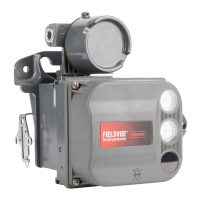
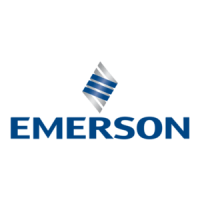
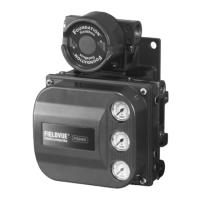
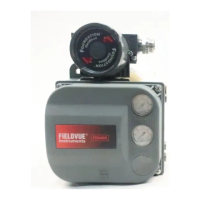



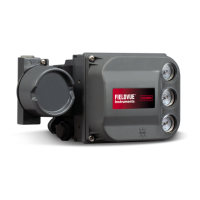
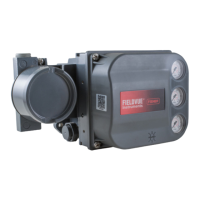
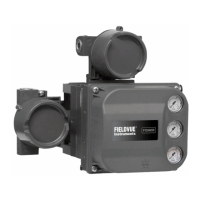
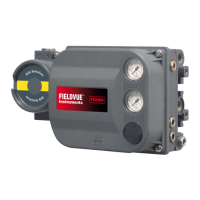
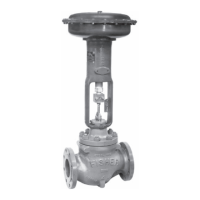
